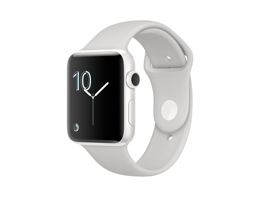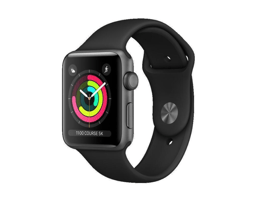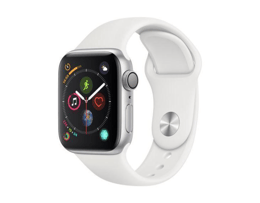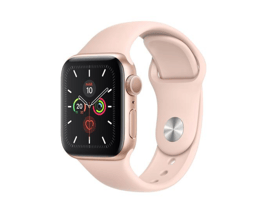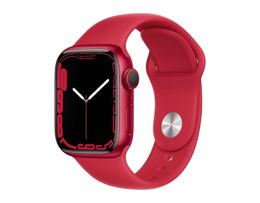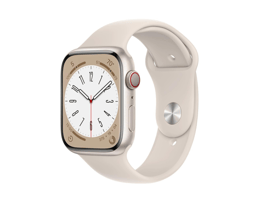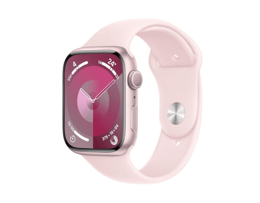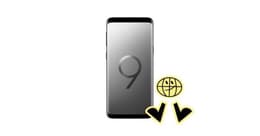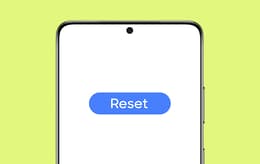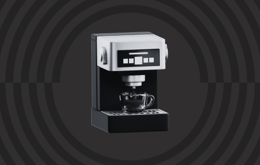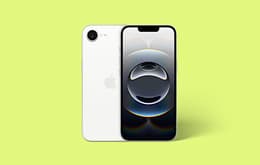
Your questions about which Apple Watches are waterproof answered.
Smartwatches can do everything these days, from calling and texting to tracking workouts and even medical conditions. As a result, the Apple Watch is a great tool to help keep you fit and on track with your workouts even when you’re headed back to school. And you’ll notice that when tracking your workouts, there are multiple swim options that you can choose. This begs the question: are Apple Watches waterproof?
Well, yes and no. According to Apple, Apple Watches are water-resistant, but not fully waterproof, and different watches have different levels of water-resistance. This simple yet vague answer often leads to even more questions about what you can and can’t do with your Apple Watch.
In this article, we’ll explore which Apple Watches are waterproof, what you can and can’t do in regard to getting them wet, what the Water Lock feature does, and troubleshooting what to do if water does seep into your watch. So, let’s dive in to the specifics of these waterproof Apple Watches.
Can my Apple Watch get wet?

As mentioned above, your Apple Watch is water-resistant, so yes, the short answer is that it can get wet. But how wet can it get?
That depends on the watch model itself. All Apple Watches are perfectly suitable for rainy weather, sweating during exercise, and minimal splashing while washing your hands. Some Apple Watches have a higher level of water-resistance than others, so it’s important to know what you’re working with before jumping in the pool.
As someone who has tested and owned many Apple Watch models, I’ll use my knowledge in this article to help users decide which one is best for their specific water-related needs. Let’s start by comparing the water-resistance levels of each Apple Watch model.
Apple Watch Series 1

The first model of the Apple Watch, Series 1, is not quite as waterproof as the other Apple Watch models. The Apple Watch Series 1 is simply splash-resistant.
The Apple Watch Series 1, or 1st Generation, has a water resistance rating of IPX7, or Ingress Protection Level 7. A rating of IPX7 means that the watch can be submerged in up to 1 metre of water for up to 30 minutes without incurring any damage. So, is it a huge deal if it gets a little wet? No. But should you swim in it? Also no.
As the Apple Watch Series 1 is the oldest Apple Watch available, it tends to be cheaper than newer models but also has fewer extra features. Perhaps the main issue with the Apple Watch Series 1 is that it is incompatible with many newer watchOS updates, which will keep the watch’s overall performance at a lower level. Learn More About The Apple Watch Series 1.
Apple Watch Series 2 through 9
Each Apple Watch series after Series 1, from Series 2 all the way up to the newest Series 9, has a water-resistance rating of up to 50 metres. A huge jump up the scale from Series 1, that means if you have an Apple Watch Series 2, 3, 4, 5, 6, 7, 8, or 9, you’re fine to wear it in shallow water, so swimming in the ocean or the pool is fine. So yes, Apple Watch Series 2 through 9 are more waterproof than Apple Watch Series 1.
However, it’s worth noting that these watches are not designed for high-pressure situations, so diving, skiing, tubing, and other high-velocity water sports are not a good idea.
The Apple Watch Series 2 is also a step up from Series 1 in its other features, such as a higher quality display and an optical heart sensor. Each series number adds a few more features and updates, and the quality of the display, health and fitness features, and even the size of the watch go up as you move through each series towards Series 9. Of course, the older series will be cheaper, but they may also have fewer extra features and be incompatible with newer updates.
Apple Watch SE
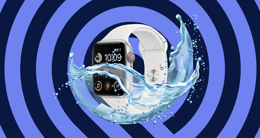
The more affordable Apple Watch SE also has water-resistance of up to 50 metres, just like the regular Series 2 through 9. However, these models have fewer features in general than the regular Apple Watch and the Apple Watch Ultra. As the design of this watch is similar to the regular Apple Watch, high-pressure situations should be avoided.
The Apple Watch SE, whether it’s the 1st or 2nd generation, tends to have fewer health and fitness features and a lower quality display than other Apple Watch models, leading to its lower price.
Are Apple Watches waterproof? Apple Watch Ultra 1 and 2

The Apple Watch Ultra is just that when it comes to the bells and whistles: ultra. Along with advanced features like a higher quality and bigger display than any other Apple Watch and enhanced speakers and microphone capabilities, it is the most waterproof Apple Watch out there.
Both models of the Apple Watch Ultra feature water resistance of up to 100 metres and recreational dive capability of up to 40 metres. These watches are also EN13319-compliant, which is a European diving depth gauge standard. So yes, you can even go scuba diving in it! This is perhaps the biggest difference between the Apple Watch Ultra and the Apple Watch and Apple Watch SE – the Ultra can handle high-pressure situations, making it the sturdiest watch in Apple’s line-up.
So my Apple Watch is water-resistant – how far can I submerge it?
Now that we’ve broken down the different water-resistance ratings and discussed the features of each Apple Watch, let’s sum it up.
Apple Watch Model | Water-resistance Rating | Can you swim in it? | Can you dive in it? |
|---|---|---|---|
Apple Watch 1st generation | IPX7 (splash-resistant), up to 1 metre | No | No |
Up to 50 metres | Yes | No | |
Apple Watch SE (1 and 2) | Up to 50 metres | Yes | No |
Apple Watch Ultra (1 and 2) | Up to 100 metres | Yes | Yes (up to 40 metres) |
Do I need to “Water Lock” my Apple Watch?

Each Apple Watch has a feature called “Water Lock” that you can activate by clicking the long button on the side (the same button you would use to reach the ‘Do Not Disturb’ option) to reach the Control Centre. The Water Lock option shows up in the form of a water drop icon in the menu once you click the button. Tap it to turn it on, or it will also automatically turn on if you select one of the swimming options from the workout list.
Basically, the Water Lock keeps the Apple Watch display from being activated by water. It’s a good idea to activate this feature before getting in the water with your watch, just so that you’re not accidentally sending messages or changing your settings while you’re swimming.
But activating Water Lock also activates another built-in feature of the Apple Watch: ejecting water from the built-in speaker. When you’re done swimming, and you want to turn off Water Lock, hold down the Digital Crown. This will automatically eject any water that has got into the watch and then turn the display back on when it’s done.
So, should you water lock your Apple Watch? Yes, you should. But no worries – if you forget, it’s not a huge deal.
What happens if water seeps into my waterproof Apple Watch? Your troubleshooting guide
First, after swimming, you should always rinse the Apple Watch in lightly running lukewarm water to get rid of any chemical residue from the pool or salt from the sea. These can erode the watch and affect its water-resistance. Then, dry off the display using a soft lint-free cloth, such as a microfiber cloth or lens-cleaning wipe. Do not use heat or compressed air.
Then, eject any water from your watch using the built-in feature mentioned above in Water Lock mode. If it wasn’t already Water Locked, navigate to the Control Centre and activate it. Then, hold the Digital Crown to eject the water and turn Water Lock back off. You’ll see a graphic stating “Ejecting water” and when it’s done, it’ll beep to remove any last drops of water from the speaker and unlock your display.
If your Apple Watch still sounds muffled, you’ll need to wait for any remaining water to evaporate. You can try letting it charge to speed up the evaporation, or put it speaker-side down on a cloth to encourage any remaining water to drip out. Never put anything into the openings of the Apple Watch or shake it to try to get the water out.
Conclusion
When considering which Apple Watch model is best for your favourite underwater activities, remember, you don’t always have to buy a brand new one. Refurbished Apple Watches can deliver the same functionality and water-resistance as new ones, but at a fraction of the price. I personally trust refurbished electronics marketplaces like Back Market to assist with my search for high-quality watches and other products at an affordable cost.
Back Market holds itself to high-quality standards, so they meticulously examine, test, and restore each product to its original condition to ensure you’re getting the most bang for your buck. Another perk of buying refurbished electronics is that it’s a more sustainable way to shop – you’re enjoying a product that’s as good as new for an affordable price, while also reducing electronic waste.
In addition, Back Market cares about students. That’s why they’re offering a special student discount on all purchases of £250 or more. All you have to do is sign up, fill out the student form (it only takes 2 seconds), and get your code for £20 off of any product on Back Market.


